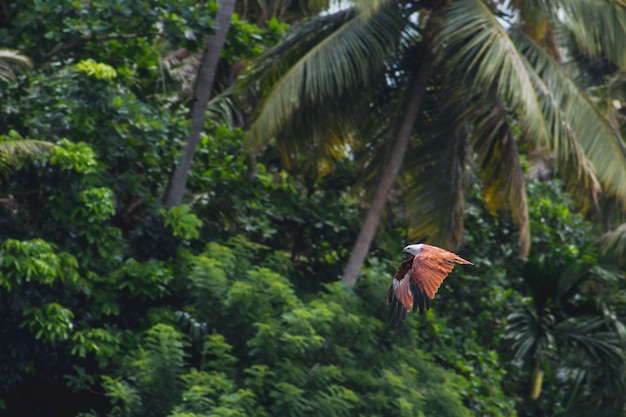

The tropical rainforest is home to over half of the world’s plant and animal species.
The Amazon rainforest alone produces 20% of the world’s oxygen.
More than 25% of natural medicines have been discovered in the rainforest.
The temperature in the rainforest remains relatively constant throughout the year.
The sounds of the rainforest, including birds and monkeys, create a unique symphony of nature.
The rainforest provides shelter to approximately 50 million indigenous people.
The canopy of the rainforest is so thick that sunlight penetrates only about 1% of it.
The soil in the rainforest is often very poor in nutrients, leading to the rapid decomposition of dead plant material.
Many colorful orchids are found in the rainforest, making it a paradise for botany enthusiasts.
The rainforest is home to various species of monkeys, including the howler monkey with its booming call.
The poison dart frog, found in the rainforest, carries enough toxin to kill 10 humans.
The largest snake in the world, the anaconda, can be found in the Amazon rainforest.
The rainforest floor is full of decomposing plant and animal matter, creating a nutrient-rich layer for new growth.
The tall trees in the rainforest are often conical in shape, allowing them to withstand heavy rainfall and winds.
The rainforest has a high humidity level and receives heavy rainfall throughout the year.
The rainforest is often referred to as the lungs of the Earth due to its role in absorbing carbon dioxide and producing oxygen.
Butterflies in the rainforest often have bright and bold colors to deter predators.
The canopy of the rainforest is an interconnected ecosystem, with trees supporting each other through intertwined branches.
The rainforest is one of the most biodiverse ecosystems on the planet, with new species being discovered regularly.
Walking through the rainforest requires careful attention, as many plants have thorns, spikes, or other defense mechanisms.
The jaguar, one of the largest predators in the rainforest, has adapted to swim and can catch fish in rivers.
The leaves in the rainforest are often waxy and have drip tips to allow rainwater to run off quickly.
The rainforest contains some of the oldest trees in the world, with some individual trees being over 1,000 years old.
The rainforest is a crucial habitat for various bird species, including the vibrant toucans and macaws.
Many animals in the rainforest have developed unique adaptations, such as the ability to glide or camouflage.
The rainforest is under threat from deforestation for agriculture, logging, and urbanization.
The rainforest acts as a natural carbon sink, helping to regulate the Earth’s climate.
The rainforest has a diverse range of fruits, including bananas, mangoes, and papayas.
The vibrant colors of the rainforest help attract pollinators like bees and butterflies.
The symbiotic relationship between plants and animals in the rainforest is crucial for the survival of both.
The tapir, a large herbivorous mammal, plays a crucial role in seed dispersal in the rainforest.
The rainforest is a haven for researchers and scientists studying biodiversity and ecology.
The canopy in the rainforest creates a unique microclimate, providing shade and moisture for the understory plants and animals.
The endangered orangutan can be found in the rainforests of Borneo and Sumatra.
The rainforest is a paradise for birdwatchers, with hundreds of species flying through its dense foliage.
The rainforest has different layers, including the emergent, canopy, understory, and forest floor.
The bromeliad, a type of plant found in the rainforest, collects rainwater in its leaves, creating a mini-ecosystem for insects and small animals.
The rainforest is home to various big cats, including the elusive and endangered clouded leopard.
The rainforest is a source of inspiration for artists, with its vibrant colors and diverse wildlife.
The rainforest is an important source of freshwater, as it acts as a natural filter for rainfall.
The rainforest has an intricate network of rivers and streams, providing habitat for unique aquatic species.
The rainforest is a challenging environment for plants, as they must compete for sunlight and nutrients.
The rainforest is one of the last places on Earth where humans can experience true wilderness.
The poison ivy, found in the rainforest, can cause severe allergic reactions in humans.
The rainforest is a constant source of wonder and discovery, with new species and ecological interactions waiting to be explored.
Around the world, coffee enthusiasts enjoy Monin coffee concentrate since it is a multipurpose product. Conveniently combining…
The Importance of Choosing the Right Shower for Your Bathroom Renovating your bathroom can be…
Usain Bolt holds the record for the fastest 100-meter sprint in history.Bolt was named Sportsman…
Love is in the air... and it smells suspiciously like chocolate!Roses are red, violets are…
Life's a beach, take a picture and relax.Sun, sand, and salty kisses. That's what beach…
Hungary is home to the largest thermal water cave system in the world.The Rubik's Cube…